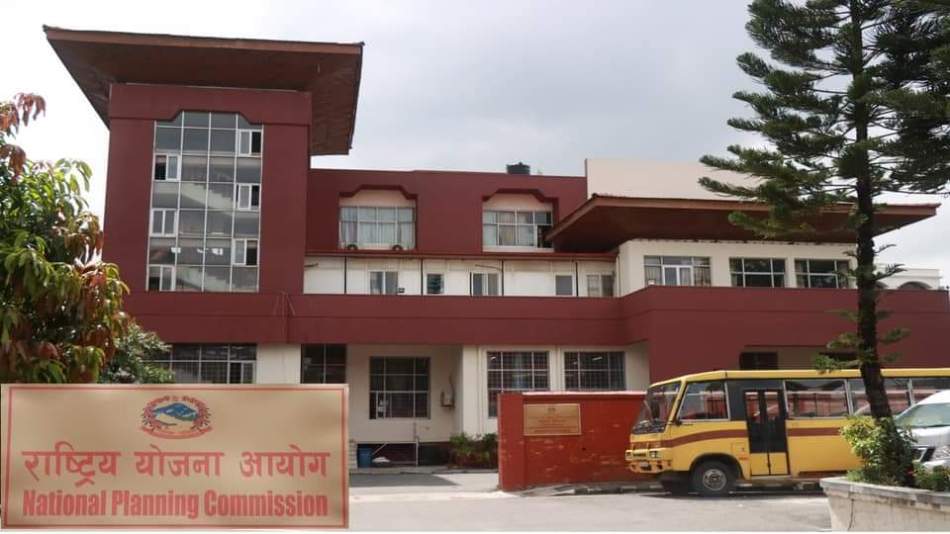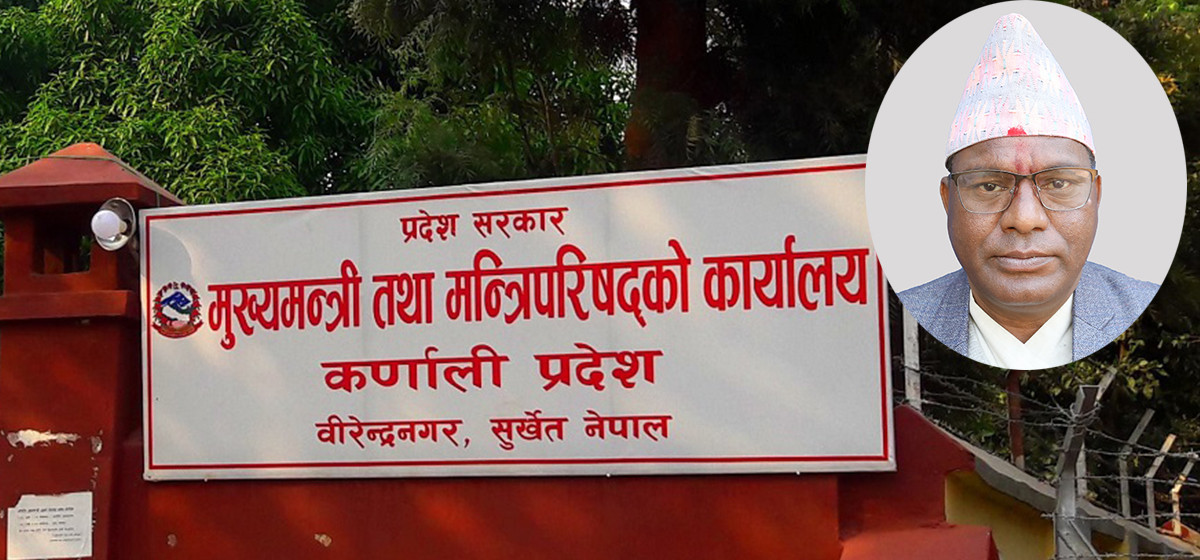
OR
Five exemplary steps by local bodies (with video)
Published On: September 9, 2018 06:10 PM NPT By: Rudra Pangeni | @rudrapang
KATHMANDU, Sept 9: A year has passed since local elections took place in most of the provinces. During this period, countless reports have surfaced about local representatives enmeshed in disputes, abuse of power, corruption, and chaotic offices. Amid these clouds of gloom are a few silver linings.
END TO ELDERLY ALLOWANCE SCAM
Until a year ago, civil servants at Kshireshwar Municipality in Dhanusha district were pocketing the old age allowances of people who were no longer alive. The dead remained in the list of beneficiaries because their families failed to register the deaths.
There has been an uptick in the registration of deaths after the municipality offered Rs 10,000 for performing the last rites. Under this initiative, the municipality saved Rs 10 million in old age allowance being paid out to those no longer living. During the current fiscal year, the municipality has spent Rs 50 million for social security payments.
Yogendra Pajiyar, the mayor of Kshireshwar Municipality, said, “Last year, we decided to provide each family that lost an elderly member Rs 10,000 for carrying out the last rites. Since then, there has been a steady uptick in the registration of deaths. It has curbed a blatant scam.”
After the local representatives took office, discrepancies in old age allowances have lessened. Other local bodies have also cracked down on similar scams. Nawarajpur Rural Municipality in Siraha saved Rs 4 million through the same initiative, according to Bishwa Mohan Yadav, the chairman.
ENGLISH CLASSES
Across the countryside there are only a few English-medium schools, and even these are far from the bigger settlements. Parents want to send their children to these schools, and for this reason many of them have simply deserted the villages. When a noticeable number of parents began to move away from the rural areas, Phalebas Municipality in Parbat district found itself with a problem on its hands: how to prevent the out-migration.
“Parents want to send their children to English-medium schools, but since we don’t have such schools, the rural population started to shrink. So, we started to teach the students in English,” said Padma Mani Sharma, the mayor. In order to prevent further migration, local officials ordered 57 schools in the municipality to teach grade one in English. The municipality has provided 283 primary school teachers a four-month training in English. They received the training from higher secondary school teachers. A basic English exam was held after the training and those who passed were allowed to teach in English. Those who failed were required to join the training again.
Many families have migrated to Kathmandu, Pokhara and towns in the district in their quest for English-medium schools, said the mayor. English should be taught up to higher secondary level in order to retain families in the countryside, according to him. “We are considering implementing this approach in the upper classes as well,” he said.
Balananda Sharma, chairman of the Local Level Restructuring Commission, said Phalebas Municipality’s initiative is an example of how local bodies can solve local problems using their own resources. “With local bodies coming into stride, they are turning to issues that the central government had overlooked,” he said.
PROMOTING BUSINESS
The Youth Self-Employment Programme initiated by the central government hasn’t been effective. But two local bodies —Galyang Municipality of Syangja district and Devghat Rural Municipality in Tanahun—have shown what is possible. They have initiated ‘business promotion programs’ to increase agricultural production. They provided loans to farmers who are wary of the high interest rates charged by banks and cooperatives. This scheme is helping increase the output of agricultural products such as milk, vegetables, lemons and oranges.
Galyang Municipality has issued loans from the Small Farmer’s Cooperative to livestock farmers for the purchase of milch buffaloes at 4 percent interest subsidy. A decade ago, the municipality was renowned for its milk output, but this sector had been in decline. The municipality is now promoting milk production.
Livestock insurance has been made free. Last year, the municipality procured a chilling vat machine for Rs 6 million to check the quality of milk. “This year also, we have allocated Rs 8 million to promote milk production, aside from the subsidy on interest,” said Bhupraj Adhikari, the mayor. For each purchase of an improved breed buffalo, the municipality provides a subsidy of Rs 20,000, he said.
Devghat Rural Municipality has set up a fund of Rs 5 million as seed money for farmers to promote milk production. The municipality plans to provide loans of Rs 30,000 to 200,000 for businesses that generate self-employment. The interest on the loans is 6 percent, the cheapest rate going.
Three years ago, the bigger farmers had benefited from a central government scheme to provide 6 percent subsidy on interest. But the little guys got nothing because the banks were not interested in dealing with them.
“Since last year, we have trained 300 youths on how to plan a business. Durga Bahadur Thapa, the chairman, said his office provided a Rs 200,000 subsidy to a dairy cooperative and a 50 percent subsidy for orange and lemon seedlings. The scheme is ongoing.
REFORM OF GOVERNMENT SCHOOLS
Schools in Hariwan Municipality of Sarlahi district had deteriorated like other government schools across the country. The schools rarely held all their classes because the teachers showed up only irratically, and the managements were in disarray. Students and parents had little confidence in such schools.
Things changed after the municipality installed electronic attendance machines. The teachers are paid on the basis of their attendance record. Following this initiative, teachers in all 20 schools have reported on time and the quality of teaching has improved. This has made the parents happy.
“We have restored faith in the schools,” said Mayor Ganesh Prasai. “We have demonstrated that even government schools can be good.” Prasai is leading a campaign to improve education at government schools. To that end, the teachers are working together with parents. The campaign also includes keeping the school premises clean. And at least one electric fan has been installed in every classroom.
There has been a 15 percent increase in student enrollments in Hariwan. Even those who switched to private schools following the decline of government schools have now started to return. A total of 21 additional students including those transferring from private schools have enrolled at Deurali Primary School in Hariwan -9. Twelve students who enrolled at pre-primary level had also previously attended private schools, according to Principal Yamanath Uprety. “The new leadership at local level has not only boosted the willpower of teachers but also helped improve school monitoring and the management of resources,” he said.
FOUR BRIDGES IN ONE YEAR
KP Sharma Oli announced a plan in September 2015 to replace the precarious rope crossings at Nepal’s rivers with suspension bridges. It has been six months since he became prime minister, but people in remote areas still make the perilous crossings with ropes or on dilapidated bridges.
This was also the fate of people in Dhaulagiri Rural Municipality, Myagdi district. But in less than a year after the elections, local officials have built four bridges including a truss bridge, two suspension bridges and a temporary motorable bridge. Since June, people in Dhaulagiri have been using a 102-meter suspension bridge to cross the Myagdi River at Jeltungghat.
Prior to that, people in Simkosh and Bagar had no option but to take their chances with the tattered bridge over the Myagdi River to reach the municipality office. A flood had swept away another bridge last year. Since then, the locals have had to walk five days along a circuitous road to avoid crossing the river.
“The area doesn’t even have mobile phone coverage. They suffered a lot. So we started building another bridge,” said Thamsara Pun, chairwoman of the rural municipality.
The bridge was built with technical and financial aid from the Swiss government. The total cost was Rs 4.31 million . The rural municipality spent Rs 900,000 and the locals contributed labor.
A 18 meter motorable bridge connecting Dhaulagiri with Malika Rural Municipality came into operation in June. With this, nearly half the district has been connected with road network. The rural municipality funded the bridge, which cost Rs 3.58 million.
Other projects include a 32 meter truss bridge over the Kharikhola and a suspension bridge over the Darkhola at ward no 2. The Swiss government supported the construction of the two bridges, with the rural municipality providing matching funds.
You May Like This

UML candidates win mayor/deputy mayor in Tulsipur
DANG, May 25: CPN-UML candidates Tikaram Khadka and Syani Chaudhary have been elected as the mayor and deputy mayor of... Read More...

Local reps misusing government vehicles
SINDHULI, Oct 28: The misuse of government vehicles has emerged as a major concern with more local representatives and leaders using... Read More...

Govt to fix temporary capitals of provinces
KATHMANDU, Jan 9: The government has said that it is working to announce the temporary capitals of the provinces. ... Read More...







Just In
- National Development Council meeting on Thursday to finalize 16th Plan
- Qatar Emir meets PM Dahal, bilateral agreement and MoUs signed between Nepal and Qatar
- Employee involved in distribution of fake license transferred to CIAA!
- Youth found dead in a hotel in Janakpur
- CM Kandel to expand cabinet in Karnali province, Pariyar from Maoist Center to become minister without portfolio
- Storm likely to occur in Terai, weather to remain clear in remaining regions
- Prez Paudel solicits Qatar’s investment in Nepal’s water resources, agriculture and tourism sectors
- Fire destroys 700 hectares forest area in Myagdi



_20240423174443.jpg)








Leave A Comment